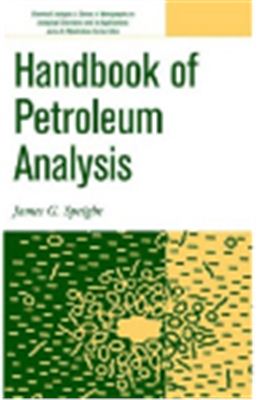Chemical Analysis: A Series of Monographs on Analytical Chemistry
and Its Applications,Vol. 158
John Wiley and Sons, 2001. 474 p. ISBN:0471361671
Handbook of Petroleum Analysis promotes a better understanding of the criteria affecting the quality of petroleum and petroleum products and is a valuable resource for chemists and engineers in the refining industry.
Petroleum exhibits a wide range of physical properties. Numerous tests have been and continue to be developed to provide an indication of the means by which a particular feedstock should be processed. An initial inspection of the nature of petroleum provides deductions about the most logical means of refining and classifying. Handbook of Petroleum Analysis is a single, comprehensive source that describes the application and interpretation of data resulting from various test methods for petroleum feedstocks and products.
The need for the application of analytical techniques to petroleum has increased over the past three decades due to changes in feedstock composition. Handbook of Petroleum Analysis deals with the various aspects of petroleum analysis while providing a detailed explanation of the necessary standard tests and procedures that are applicable to feedstocks. The material also reviews the application of new methods for determining instability and incompatibility, focusing on the analytical methods related to environmental regulations. Most importantly, the book provides details of the meanings of the various test results and how they might be applied to predict feedstock behavior. Where pertinent, new tests that are not yet accepted as standardized are described.
Topics covered in Handbook of Petroleum Analysis include:
Chemical composition
Physical, thermal, electrical, and optical property testing methods
Spectroscopic, chemical, fractionation, and chromatographic methods
Molecular weight
Use of the data (i.e. , mapping and predictability)
Table of Contents
Preface
Cumulative Listing of Volumes in Series
Definitions and History
Chemical Composition
Classification
Physical Properties
Thermal Properties
Electrical and Optical Properties
Spectroscopic Methods
Chemical Methods
Fractional Composition
Chromatographic Analysis
Structural Group Analysis
Molecular Weight
Instability and Incompatibility
Use of the Data - The Structure of Petroleum
Use of the Data - Mapping and Predictability
Index
John Wiley and Sons, 2001. 474 p. ISBN:0471361671
Handbook of Petroleum Analysis promotes a better understanding of the criteria affecting the quality of petroleum and petroleum products and is a valuable resource for chemists and engineers in the refining industry.
Petroleum exhibits a wide range of physical properties. Numerous tests have been and continue to be developed to provide an indication of the means by which a particular feedstock should be processed. An initial inspection of the nature of petroleum provides deductions about the most logical means of refining and classifying. Handbook of Petroleum Analysis is a single, comprehensive source that describes the application and interpretation of data resulting from various test methods for petroleum feedstocks and products.
The need for the application of analytical techniques to petroleum has increased over the past three decades due to changes in feedstock composition. Handbook of Petroleum Analysis deals with the various aspects of petroleum analysis while providing a detailed explanation of the necessary standard tests and procedures that are applicable to feedstocks. The material also reviews the application of new methods for determining instability and incompatibility, focusing on the analytical methods related to environmental regulations. Most importantly, the book provides details of the meanings of the various test results and how they might be applied to predict feedstock behavior. Where pertinent, new tests that are not yet accepted as standardized are described.
Topics covered in Handbook of Petroleum Analysis include:
Chemical composition
Physical, thermal, electrical, and optical property testing methods
Spectroscopic, chemical, fractionation, and chromatographic methods
Molecular weight
Use of the data (i.e. , mapping and predictability)
Table of Contents
Preface
Cumulative Listing of Volumes in Series
Definitions and History
Chemical Composition
Classification
Physical Properties
Thermal Properties
Electrical and Optical Properties
Spectroscopic Methods
Chemical Methods
Fractional Composition
Chromatographic Analysis
Structural Group Analysis
Molecular Weight
Instability and Incompatibility
Use of the Data - The Structure of Petroleum
Use of the Data - Mapping and Predictability
Index

